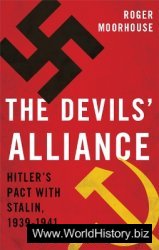Although the image of the West as the land of great open spaces is accurate enough, after the Civil War the region contained several bustling cities. San Francisco, with a population approaching 250,000 in the late 1870s, had long outgrown its role as a rickety boom-town where the forty-niners bought supplies and squandered whatever wealth they had sifted from the streams of the Sierras. Though still an important warehouse and supply center, it had become the commercial and financial heart of the Pacific Coast and a center of light manufacturing, food processing, and machine shops. Denver, San Antonio, and Salt Lake City were far smaller, but growing rapidly and equally “urban.”
There was no one West, no typical Westerner. Although the economy was predominantly agricultural and extractive, commercial and industrial activities were expanding. The seeds of such large enterprises as Wells Fargo, Levi Strauss, and half a dozen important department store empires were sown in the immediate postwar decades.
Beginning in the mid-1850s a steady flow of Chinese migrated to the United States, most of them to the West Coast. About four or five thousand a year came, until the negotiation of the Burlingame Treaty of 1868, the purpose of which was to provide cheap labor for railroad construction crews. Thereafter the annual influx more than doubled, although before 1882 it exceeded 20,000 only twice. When the railroads were completed and the Chinese began to compete with native workers, a great cry of resentment went up on the west coast. Riots broke out in San Francisco in 1877. Chinese workers were called “groveling worms,” “more slavish and brutish than the beasts that roam the fields.” The California constitution of 1879 denied the right to vote to any “native of China” along with idiots, the insane, and persons convicted of “any infamous crime.”
When Chinese immigration increased in 1882 to nearly 40,000, the protests reached such a peak that Congress passed the Chinese Exclusion Act, prohibiting all Chinese immigration for ten years. Later legislation extended the ban indefinitely.
Nevertheless, many parts of the West had as large a percentage of foreign-born residents as the populous eastern states—nearly a third of all Californians were foreign-born, as were more than 40 percent of Nevadans and more than half the residents of Idaho and Arizona. There were, of course, large populations of Spanish-speaking Americans of Mexican origin all over the Southwest. Chinese and Irish laborers were pouring into California by the thousands, and there were substantial numbers of Germans in Texas. Germans, Scandinavians, and other Europeans were also numerous on the High Plains east of the Rockies.




 World History
World History









